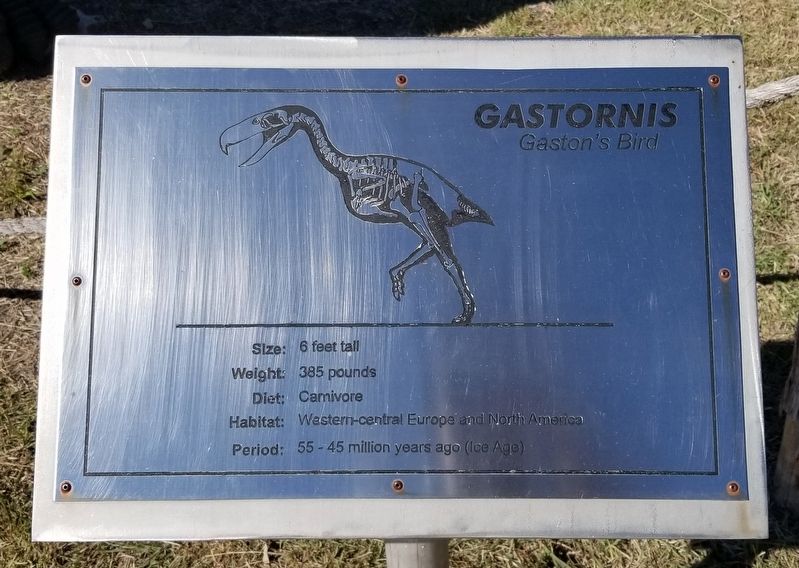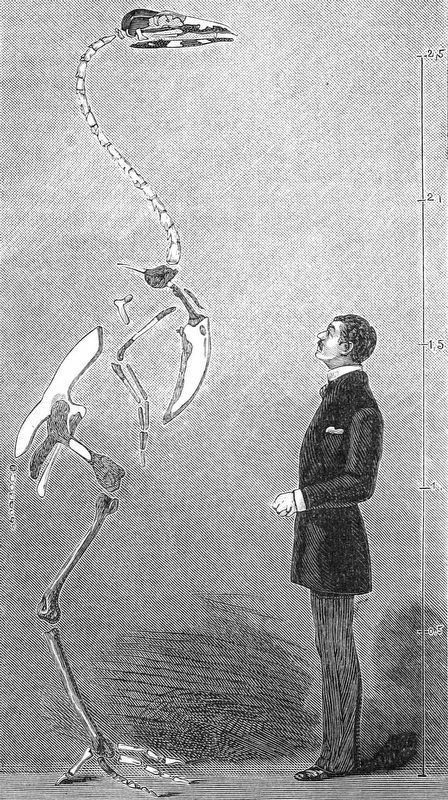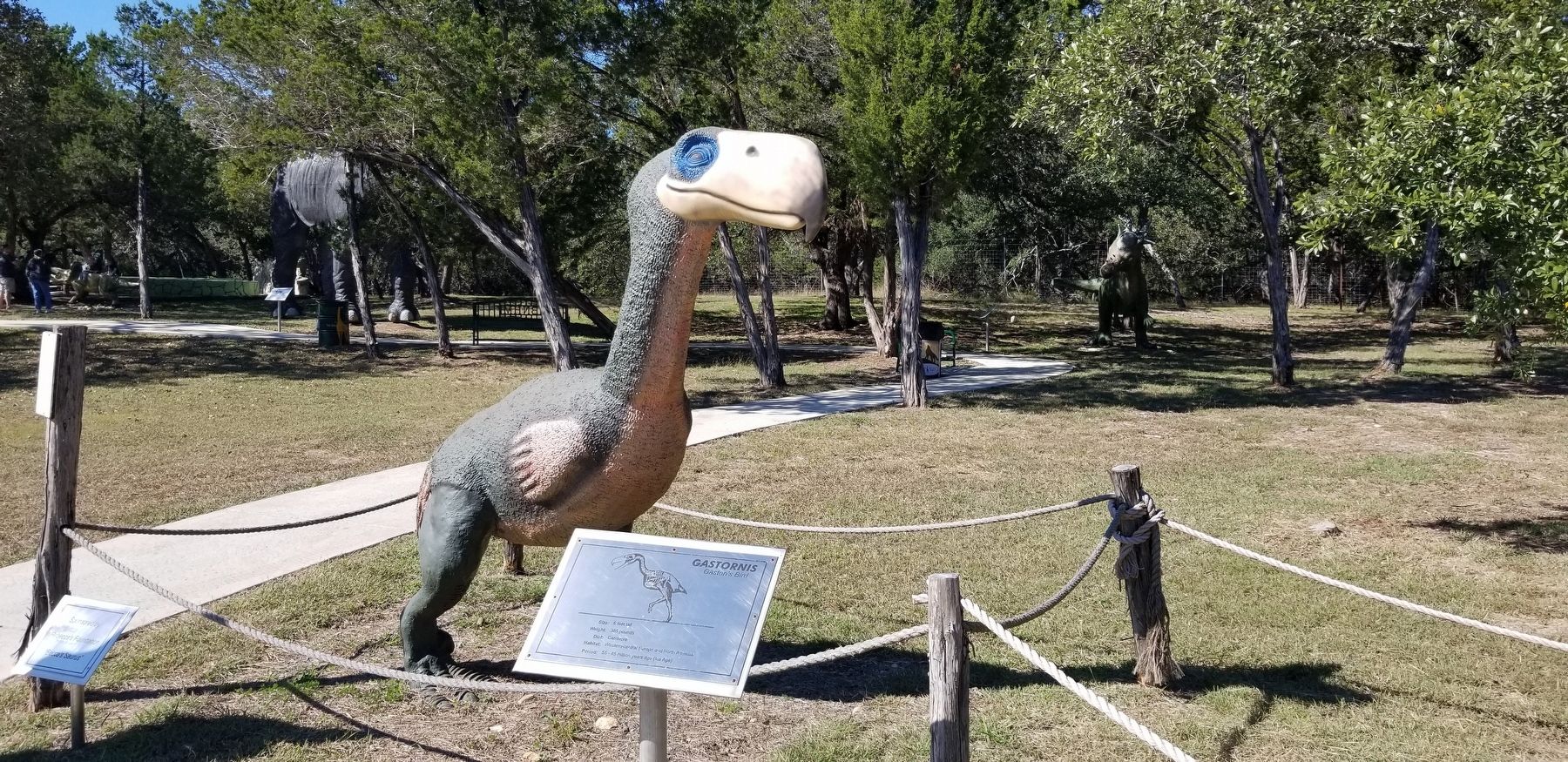Bandera in Bandera County, Texas — The American South (West South Central)
Gastornis
Gaston's Bird
Size: 6 feet tall
Weight: 385 pounds
Diet: Camivore
Habitat: Western-central Europe and North America
Period: 55-45 million years ago (Ice Age)
Erected by Bandera Natural History Museum.
Topics. This historical marker is listed in these topic lists: Animals • Paleontology.
Location. 29° 43.875′ N, 99° 4.066′ W. Marker is in Bandera, Texas, in Bandera County. Marker can be reached from Old San Antonio Road, 0.1 miles north of State Highway 16. The marker is located on the grounds of the Bandera Natural History Museum. Touch for map. Marker is at or near this postal address: 267 Old San Antonio Road, Bandera TX 78003, United States of America. Touch for directions.
Other nearby markers. At least 8 other markers are within walking distance of this marker. Deinonychus (a few steps from this marker); Dilophosaurus (a few steps from this marker); Pachycephalosaurus (a few steps from this marker); Indricotherium (within shouting distance of this marker); Mastodon (within shouting distance of this marker); Stegosaurus (within shouting distance of this marker); Smilodon (within shouting distance of this marker); Torosaurus (within shouting distance of this marker). Touch for a list and map of all markers in Bandera.
Regarding Gastornis. There is a entrance fee to visit the Bandera Natural History Museum which allows you to walk through the dinosaur exhibits and markers.
Also see . . . Gastornis.
Gastornis is an extinct genus of large flightless birds that lived during the late Paleocene and Eocene epochs of the Cenozoic era. The genus is currently thought to contain three or four distinct species, known from incomplete fossil remains, found in western-central Europe (England, Belgium, France and Germany). More complete specimens are known from a fourth, North American species, which had previously been classified in the distinct genus Diatryma. Many scientists now consider Diatryma to be so similar to the other species of Gastornis that it should also be included in that genus. A fifth species, also previously classified in its own genus, is known from China. Source: Wikipedia(Submitted on January 3, 2022, by James Hulse of Medina, Texas.)
Credits. This page was last revised on January 3, 2022. It was originally submitted on January 3, 2022, by James Hulse of Medina, Texas. This page has been viewed 103 times since then and 8 times this year. Photos: 1, 2, 3. submitted on January 3, 2022, by James Hulse of Medina, Texas.


